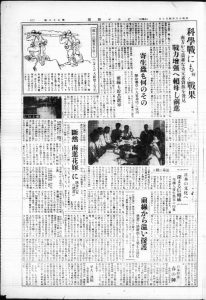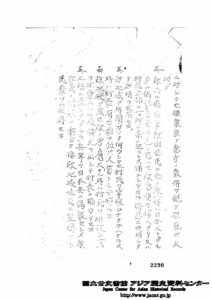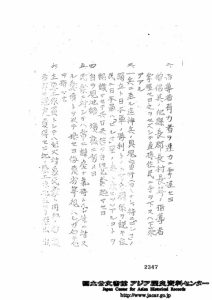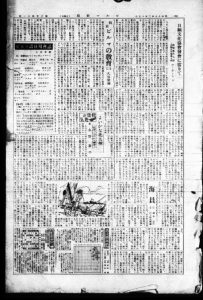JACAR Newsletter
JACAR Newsletter Number 43
March 27,2024
Special Feature
Tracing Memories of the Imphal Campaign in Nagaland, Northeast India
Interview with WATABE Haruna, University of Delhi Doctoral Student
Primary sources such as official documents and newspapers released by JACAR are used in a variety of contexts, including for historical research and for investigating period accuracy. For this article, we spoke with Haruna Watabe, a doctoral student at the University of Delhi. Her research revolves around the memories and records of World War II within Nagaland, a state in Northeast India. Nagaland served as the fierce site of the Imphal Campaign (see below for “Explanation of Terms from JACAR”), in which the Japanese army invaded British-ruled India from Myanmar (formerly Burma). The military operation is regarded as a brutal and reckless one that underestimated logistical needs. As we approach 80 years since the end of the war, people in Nagaland can still be seen using items left behind by the Japanese and Allied forces in many forms. Watabe employs a sociological approach in her research involving archival documents and field interviews; we spoke with her about what becomes visible when examining the memories and records of war.
Profile:
WATABE Haruna
Born in Tokyo in 1989, Watabe started her studies in India in 2017. She is currently enrolled in the Delhi University (DSE) doctoral program in the Department of Sociology. Watabe conducts research on war memories in Nagaland, the fierce battleground of the Imphal Campaign. Her work examines diverse experiences of war and how it has been memorialized from the perspective of local residents. Her published papers include a study on the memory and commemoration of World War II in Nagaland: “A Study of Second World War Remembrance and Commemoration in Nagaland: A Perspective from the State Government and the Nagas“ in “Prime Occasional Papers” (No. 8, p. 50-72, 2023).
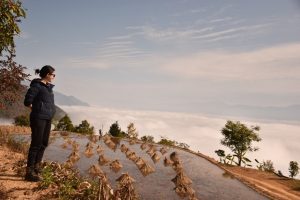
Explanation of Terms from JACAR
・Imphal Campaign
A military campaign conducted by the Japanese army from March to July 1944 during the Pacific War, targeting the city of Imphal in Northeast India for invasion. The purpose was to support the Indian independence movement from British colonial rule and to cut off the Chiang supply route (used by the Allied Forces to transport provisions to China’s Chiang Kai-shek regime). Approximately 6,000 soldiers of the Indian National Army, under the command of Subhas Chandra Bose of the Provisional Government of Free India, also participated in the Imphal Campaign. Due to factors such as lack of supply routes and air inferiority, the operation ended in a historic defeat, with around 30,000 casualties and approximately 40,000 wounded or sick of some 100,000 troops who participated in the campaign.
・Nagaland
One of the eight states in Northeast India, bordering Myanmar. The capital is Kohima. The Nagas are ethnic group that encompasses several tribes, and the state is home to 17 government- recognized tribes, along with several subtribes.
・Burma Newspaper (Biruma Shinbun)
A Japanese-language newspaper that started being published in Yangon (formerly Rangoon) on January 1st, 1943, following the Japanese invasion of Myanmar. The readership was mostly limited to Japanese soldiers in the country’s wartime theaters. It differed somewhat from other Japanese-language newspapers in Southeast Asia during the Pacific War and was considered an extension of the battleground Jinchu Shinbun military newspaper. The publishing company, Biruma Shinbunsha, was closed by the Allied forces on April 21st, 1945.
―What was the starting point for your research?
In 2009, while studying at Meiji Gakuin University’s Faculty of International Studies, I came across an offer to go on a tour to learn about the history and culture of Nagaland. Motivated simply by a desire to visit India, I applied without initially knowing anything about Nagaland. It was completely different from the image I had of India, and studying on the tour sparked an interest that deeply engrossed me. During my visits to various villages, I had the chance to hear about the interactions between locals and the Japanese soldiers. This prompted me to look into how the Imphal Campaign had been researched in Japan. What I found was a one-sided portrayal of the conflict without the local people who were affected by it. Contemplating how to bridge this gap, I started to dig a little deeper. Naga people are friendly and bear resemblance to us Japanese. They cook fermented foods similar to Japanese natto, and as a natto lover, I was drawn to their food culture as well as to their rich natural landscapes.
―What is Nagaland known for?
There is a perception among the people in the Northeast region, including Nagaland, that they are racially, culturally, and socially distinct from the so-called “mainstream society” —referred to locally as the “mainland”. When people leave the Northeastern region for educational or job opportunities, they often become subjected to discrimination. The locales frequently use the term “mainland” to describe their experience of geographical and social estrangement from the “rest of India.” There is also a prevailing lack of knowledge about the Northeastern region from other parts of the country.
After my first visit to Nagaland, I tried to make a call to someone there from Kolkata airport (formerly Calcutta). When I told a public phone staff that I wanted to call Nagaland, they replied, “You can’t make that call because that’s international call.” I responded that “it (Nagaland) is part of India,” but the person said, “I haven’t heard of such place.” Through that experience, I realized the full extent of the gap. Nowadays, the recognition has improved a bit, but back then, it was like that.
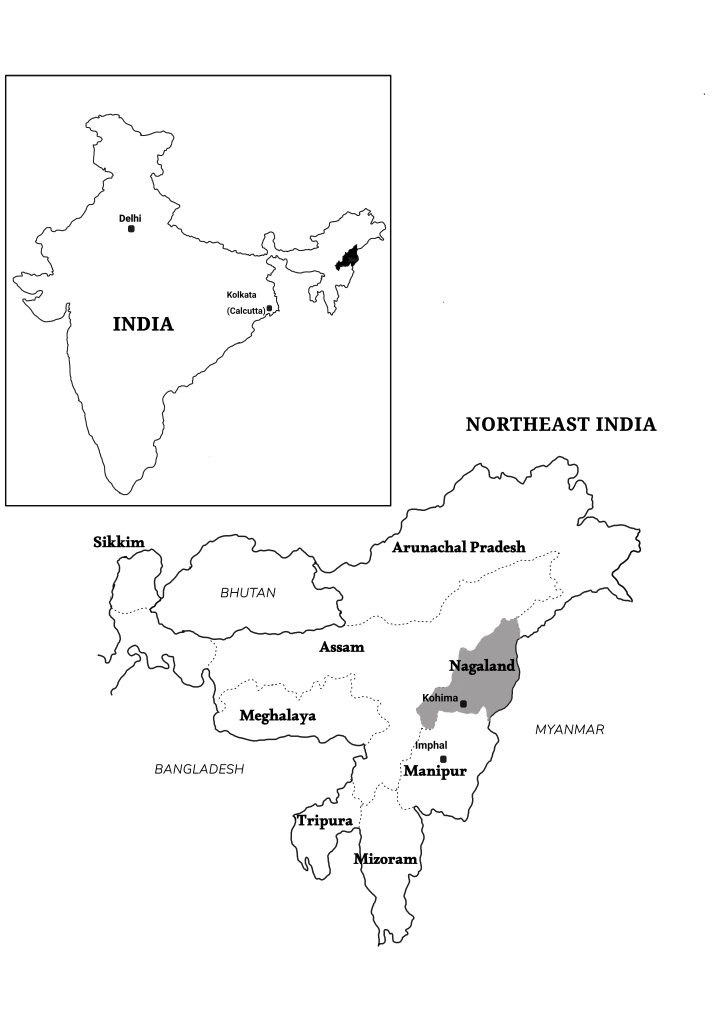
―What are differences between the history of the war that the people in Nagaland talk about versus the history known in Japan?
Nagaland is a considerably large region, and, within it, there are numerous variations of war narratives. In Japan, many veterans of the Imphal Campaign left extensive accounts. Their records highlight the hardships faced during the war, with a primary message advocating against the recurrence of such conflicts. The writing is characterized by a deep-seated resentment towards the nation and wartime leaders. Conversely, upon visiting Nagaland, different narratives of the war unfold. I’ve heard many accounts of the Naga people sharing their meat and rice with visibly destitute Japanese soldiers, accounts of their hidden food supplies being completely pilfered by Japanese soldiers, or the Naga people being forced to work as a coolie, and of villages being bombed.
I am often told about unexploded ordnance of the war. Recently, an undetonated bomb was found near a village where I visited. There are unfortunate accidents where curious children touched the bombs, resulting in explosions and lost limbs—some have died without being treated. We must seriously consider this significant matter of unexploded ordnance.
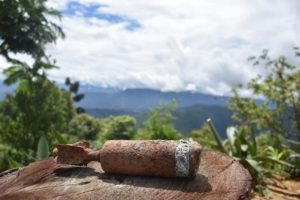
―How is your research progressing?
I am currently in a doctoral program in University of Delhi’s Delhi School of Economics, Department of Sociology. I arrived at India in 2017 and began my PhD in the fall of 2018. I have been conducting interviews since then. When I went to Nagaland in March 2020, it coincided with the country’s nationwide lockdown due to the coronavirus, and I was unable to leave for two years. The first year was spent idle, and it wasn’t until the second year that I could engage in fieldwork, conducting village interviews and examining archival documents.
―How do you conduct research while staying in Nagaland?
I have experienced the generosity of the local people and have frequently been hosted in the homes of acquaintances or church-affiliated guesthouses. When conducting interviews across a vast geographical area, it can be challenging to do it independently. It was often necessary to seek assistance with transportation and to bridge linguistic disparities between different tribes and villages. The people of Nagaland have a strong network of familial and social connections, so I used snowball sampling to find people to interview. The elderly population typically communicates solely in their tribal language, but younger generations are fluent not only in their tribal language, but also in Nagamese (the state’s lingua franca), English, and occasionally Hindi.
After the nationwide lockdown, I narrowed down my focus and stayed in a single village. There, I delved a little deeper with my research into how memories of the war are preserved, and the role war artefacts play in reminding the past.
―In what forms do you encounter memories of war in Nagaland?
In Nagaland, I often come across memories of the war in the form of dropped bombs that have been repurposed as church bells. In Phek district, there are churches in eight villages that have found ways to use recycled bombs.
Before church services, the sound of the bell echoes throughout the village. Other than bells, I also met residents using metal bowls or families using mess kits to boil water, which had been left behind by either the Allied forces or Japanese Army.
This pot is used for preparing pig feed. The feed is made by simmering leftovers for long hours, which quickly wears out local pots sold in Nagaland within a few years. In contrast, iron pots found after the war are known to be durable and have been used for decades. In such way, I discovered how the metal bowls and mess kits are still cherished and used till date. When I asked about the reason for using war artifacts, locals replied, “Because they are of high quality.” In today’s market, almost anything is available, but in the aftermath of the war, only limited resources such as bamboo and clay were accessible. Therefore, it is understandable that people found value in war artifacts. The versatility and durability of the military items make them valuable for a variety of purposes. I was once told, “This metallic pot was found by my husband. Of all the things my husband found, this is the only remaining war artifact.”
―How is the experience of World War II passed down in Nagaland?
Due to diverse experiences across village and individual levels, it is challenging to summarize in just a few words. However, stories from those who lived through the war often revolve around Japanese soldiers arriving one after another, with a central theme of having to provide them with food. Some locals shared stories of receiving money in the form of military notes in exchange of providing ration, but they had no way to use the money. Additionally, there are anecdotes about the appearance of Japanese soldiers being rather similar to the people of Nagaland aside from peculiar split-toe shoes (jika-tabi) and eating with two sticks. Due to the aging population, it has become increasingly difficult to gather firsthand experiences from those who lived through the war. A passionate Nagaland-born pastor collected stories of Japanese forces committing brutality and violence during their advance. Locals are hesitant to share such stories with me when I conduct interviews.
―Is there a date in Nagaland that people associate with remembering the war?
The most commonly heard date is April 4th. Phrases like “Japanese came on April 4th, 1944, at 4 o’clock” can be heard in many villages. Considering the area’s geography, it seems unlikely that Japanese forces simultaneously arrived across scattered mountain villages at the same date and time. Regardless, in 2019, a commemoration ceremony was held on April 4th to celebrate the 75th anniversary of the end of the war. Internationally, April 4th is considered as the beginning of the Battle of Kohima (one of the battles of the Imphal Campaign). In India, August 15th is celebrated with government-led events as the day the country gained independence from the British on August 15th, 1947. Meanwhile, among the Naga people, the movement to reject incorporation into India after the British withdrawal gained momentum, and they declared independence on August 14th, the day before India’s independence. Despite demands, independence was not recognized, leading to a prolonged independence movement. Currently, a ceasefire agreement exists between the Indian government and the political organizations, but the final peace agreement has not been reached. Perceptions vary depending on an individual’s involvement in politics, but among those who still believe in Nagaland’s sovereignty, August 14th is remembered as ‘Independence Day’.
―In our database, what kind of materials are related to your research?
Your database’s materials are valuable for understanding the social conditions of the period I research. For instance, local residents of Nagaland and Manipur states often refer to a particular plant known as “Japan Pata”. The name varies slightly among tribes, but “pata” translates to grass. While walking around the town and villages, you can often spot this weed. It is said that Japanese soldiers used Japan Pata as a hemostatic agent for wounds; today locals use it by rubbing it into wounds when injured in the jungle or during agricultural activities.
Local people say, “This is something brought by the Japanese military.” It is speculated that this weed, not present before World War II, spread after the Japanese military arrived. So there are conjectures that it was introduced from Japan. Although I have been unable to locate detailed information about this plant in Japanese, I discovered that its scientific name is Ageratina adenophora. Nevertheless, we do know that during World War II, research on plants was conducted within the army.
There is a Ministry of Defense National Institute for Defense Studies document titled “Request for dispatching infectious disease prevention/treatment squad” (images 14 and 15). The holding mentions a “dispatch of five epidemic prevention medical teams to the Burma region for implementing resident epidemic prevention medical institutions.” There is also a note that “one person from the 15th army [in charge of the Burma area, editor’s note] was appointed as an instructor for local medicinal plant cultivation… the military administration (general) dispatched local personnel to the area.” Furthermore, I found a Burmese newspaper article dated from April 7th, 1943, reporting on the cultivation of a grass that works on parasite extermination called “hinopojiyu” at the Tokyo Institute of Health Research Kasukabe Medicinal Plant Farm in Kasukabe-machi, Saitama Prefecture (present Kasukabe City). The article states, “The Kasukabe Medicinal Plant Research Institute in Saitama Prefecture has succeeded in cultivating the hinopojiyu grass, a parasite extermination plant, and will soon produce a large quantity of seeds for distribution to relevant areas.”
The article also mentions that “behind the shining southern achievements, endemic parasites in the tropical region trouble brave soldiers.” Given the difficulty in obtaining drugs to exterminate the parasites, the successful cultivation of hinopojiyu was undoubtedly a newsworthy accomplishment for the military.
I’ve tried experimenting with various search keywords and transliterations to find related materials about hinopojyu, but I still don’t have a clear understanding of what kind of grass it is. Nevertheless, just knowing that efforts were made to develop and research seeds that could be cultivated locally feels like a significant step forward.
During interviews, I have heard Japanese phrases people remembered through their contact with the Japanese soldiers. For example, I met people who knew how to say, “please give me a chicken” and “do you have chickens?” I also frequently heard the Japanese word “sonchou,” meaning “village chief.” I’ve been asked about the meaning of this word. Wondering why Japanese soldiers used the term, I found records in the Ministry of Defense National Institute for Defense Studies archives regarding propaganda activities targeting civilians in Burma. It states, “13. When in enemy territory and the villagers are in control, take the village chief hostage”; and “gain control of leaders, influential people, monks, and others such as prefectural, county, and village mayors quickly. It is no good to directly contact residents.” This clarified the context for me.
I found a short column in the Burma Newspaper (Biruma Shinbun) titled “Burmese Daily Conversation” as indicated in the upper-left corner. It offers explanations of conversational Burmese with Japanese translations for use in the office. For example, “who’s this letter from?” or “it’s from the village chief.” Through this, I noticed that the Japanese military had the term “village chief” in their daily vocabulary and I could imagine specific scenes for usage.
―The Burma Newspaper (Biruma Shinbun)collection was recently released through our collaborative partnership with Stanford University’s Hoover Institution. You can now access pages of its Japanese-language newspapers linked in our archive. What possibilities and challenges might such digital archives present when engaging in research abroad?
Being able to go online and access JACAR anytime, anywhere is extremely helpful. As I primarily rely on oral history where local documents are scarce, the process of reconstructing the past is indeed a challenging task. Analyzing historical events through a combination of verifiable records and personal recollections can provide valuable insights into the past. Digital archives like JACAR play a crucial role in cross-referencing oral history with documents. Whether discussing herbal knowledge or village leaders’ stories, comparing and verifying accounts from local residents with written documents allows us to move beyond simply accepting what a local might have heard about a “village leader.” By juxtaposing the narratives of local residents with what is in the documents, we can uncover how the Japanese military, for example, strategically used the term “village leader” to influence public opinion. Such comparisons lead to historical narratives of higher accuracy.
When using archival documents, it is crucial to carefully consider the standpoint from which they were compiled and the historical context of their creation. Additionally, it must be acknowledged that a considerable portion of Japanese military documents has been lost. While being cognizant of these missing puzzle pieces, I intend to continue conducting research that bridges digitally accessible historical documents with on-site interviews.
*Interview conducted online, December 11, 2023.
References
Ministry of Defense, National Institute for Defense Studies, Military Archives. Senshi sōsho 15 inpāru sakusen: Biruma no bōei (History of War Series 15: Imphal Operation – Defense of Burma). Asagumo Shinbunsha, 1968.
Isobe, Takuo. Inpāru sakusen: sono taiken to kenkyū (Operation Imphal: The experience and Research). Marunouchi Publishing, 1984.
Iralu, Kaka D. Nagaland and India: The blood and the Tears, 2000. (Available in Japanese as Chi to namida no nagarando: kataru koto o yurusarenakatta minzoku no monogatari in translation from Makiko Kimura and Wataru Haejima. Commons, 2011.)
Hino, Ashihei. Inpāru sakusen jūgun-ki: Ashihei “jūgun techō” zenbun honkoku (Military Record of Operation Imphal: Full Reprint of Ashihei’s Military Notebook). Shueisha, 2017.
Planning and editing by JACAR Assistant Researcher OKAWA Shiori
Editorial Supervision and Term Explanations by JACAR Researcher MIZUSAWA Hikari



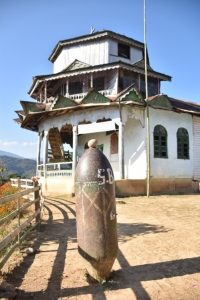
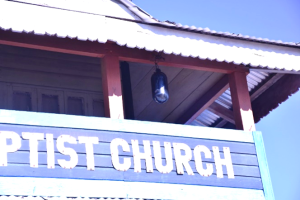

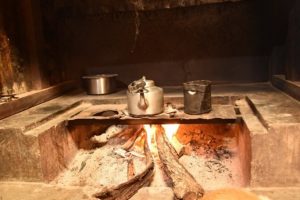
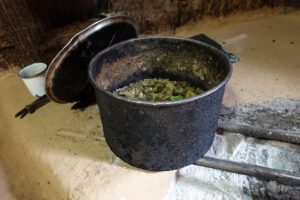
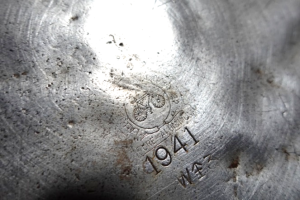
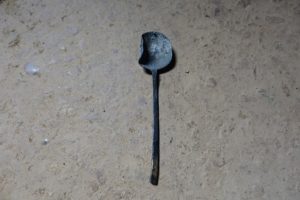
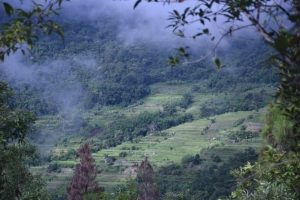
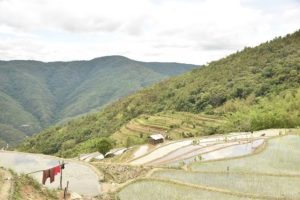
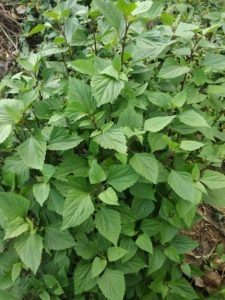
![[Image 13]](/wp/wp-content/uploads/2024/03/特集_画像1314左-1-212x300.jpg)
![[Images 14 ]](/wp/wp-content/uploads/2024/03/特集_画像1314右-1-212x300.jpg)
